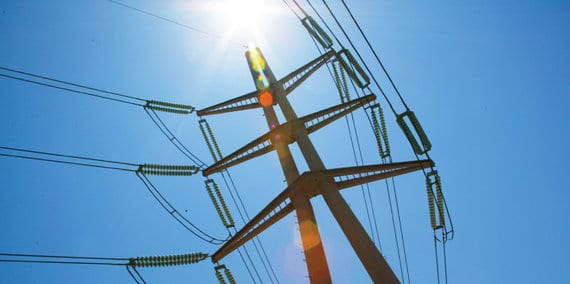The U.S. power grid is a vital part of the nation’s infrastructure. It’s also a wasteful one.
Nearly two-thirds of every megawatt U.S. power plants produce never does a bit of useful work. Some of it is lost due to the natural resistance of power lines. Some is lost as heat during generation. And, perhaps surprisingly, some is lost by design when utilities deliberately generate more electricity than they need and shed the excess.
Not only that, but the grid renders millions of acres of public and private land prohibitive to potentially economically useful activities because the land sits under transmission lines or in related easements.
Now, a new start-up is looking to solve both of these inefficiencies at once by reducing utilities’ excess power production while turning dormant lands into productive greenhouses.
Excess Electricity
In the United States, power companies are heavily regulated, in part to ensure that the grid is reliable and to avoid blackouts. Regulations dictate that the power grid have redundant “rolling reserves” — additional power that’s available immediately in case it’s needed — and also that they be ready for peak loads. To meet these regulations power companies generate excess electricity they often shed at substations because it is not needed. Although wasteful, the process allows utilities to “maintain the security of the grid,” according to the Electric Power Research Institute.
Sound like an opportunity? It did to Dien McCall, an engineering contractor with a history of working with utility companies. “The load shedding is a substantial amount of energy since they have to meet the peak demand in case it happens, but typically [it] does not happen,” McCall says. In early 2013, he formed a for-profit venture called Courage-US and devised a plan to reduce the energy waste.

The Brea, Calif.–based company aims to provide renewable energy to meet the utility companies’ needs while also providing sustainable agriculture to the region. At two locations in southern California — that should be in full swing by the end of November — McCall plans to build strings of greenhouses below the power lines on what was vacant land that the power companies had to maintain. Photovoltaic panels and wind turbines will be installed on the site, generating power the utility can tap when it needs to.
“Each facility can generate a good amount of power, but we limit their generating potential to 3 megawatts because of permitting and regulations for large quantity generators,” McCall says. “As we expand, our sites in aggregate will create a lot of power for the utility company’s requirements.” He is currently in negotiations with a utility provider. Details could not be disclosed.
The Courage-US facility will produce organic agriculture and high-end culinary herbs. However, McCall expects the majority of the company’s revenue will be generated from the relationship with the power companies. The utility companies will pay him for the ability to take the power on a whim so that they can meet their rolling reserve requirements and renewable standards without purchasing from more expensive sources to meet these needs.
Courage-US will give the utility the right to take the electricity Courage-US generates whenever the utility needs it. This right allows the utility to include Courage-US’s generation in its redundancy reserves and therefore save millions of dollars it would otherwise spend generating and transporting electricity that just gets thrown away. When a utility company must purchase energy to supply momentary spikes, it typically has to pay a premium. Courage-US allows the utility full control over the electricity the company generates because its greenhouses can survive without power for up to a few days.
As part of its negotiations with the utility, Courage-US can buy power for lower cost than it would take to produce on its own when the utility has some to spare. As a result, Courage-US can also make use of energy in the grid that would otherwise go to waste.
Why don’t utilities just put in a renewable energy station like this themselves? To prevent utilities from becoming monopolies, state mandates, including renewable energy portfolio standards, require them to buy a certain amount of their renewable energy requirements from third-party providers. Building out their own power line easements with solar panels would not help them meet these requirements and would potentially set them up to be litigated as a monopoly.
Big Promise
Courage-US is just one small business. But the approach it’s pioneering holds promise for revolutionizing land use, agriculture and energy efficiency. California alone has 32,000 miles of power lines. Conservatively, at an average width of around 125 feet, this equates to roughly 760 square miles (nearly 500,000 acres) of land, more than 12 times the size of the District of Columbia. The U.S. has over 200,000 miles of transmission lines. Utilizing this area would not only save energy, but allow urban centers, where produce currently has to be trucked or shipped in from long distances, to be able to reap the benefits of produce grown closer to them, explains McCall.
Courage-US provides a remarkable example of how an innovative business can boost food production and power grid efficiency, reduce dependence on fossil fuels and lower greenhouse gas emissions all at the same time.
Source: ENSIA. Reproduced with permission.









